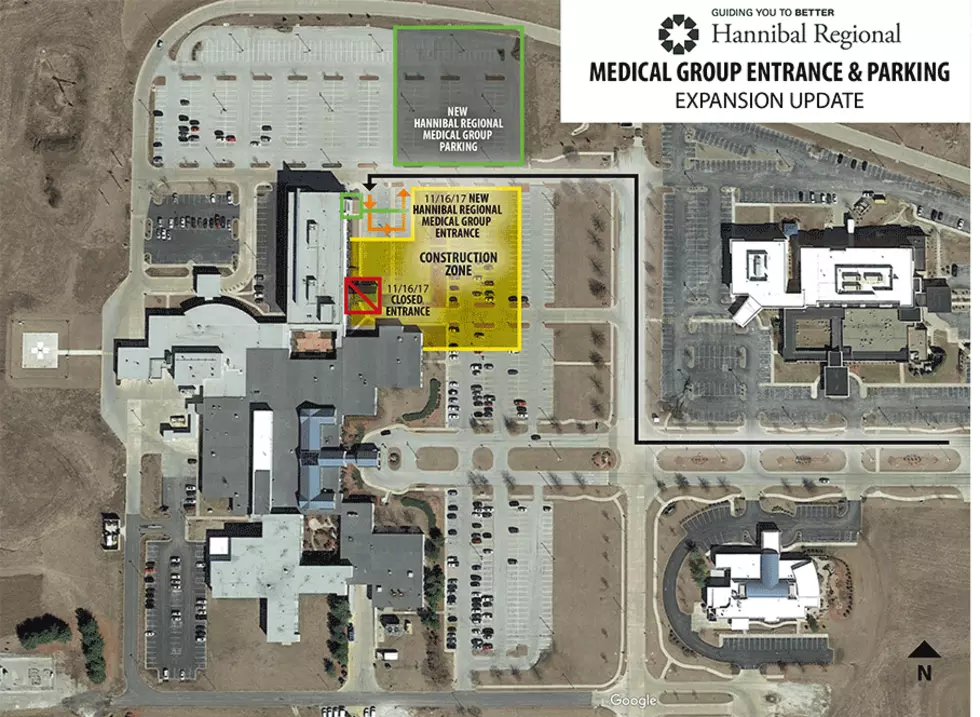![Dr. Schuyler Metlis Talks About Skin Cancer [Interview]](http://townsquare.media/site/464/files/2015/04/dr-schuyler-metlis-630x619.jpg?w=980&q=75)
Dr. Schuyler Metlis Talks About Skin Cancer [Interview]
Dr. Schuyler Metlis is a Plastic and Reconstructive Surgeon for Hannibal Regional Medical Group. We visited with Dr. Metlis about skin cancer and screenings for skin cancer that will available in May.
How common is skin cancer?
There are more than 3.5 million non-melanoma skin cancers diagnosed in the United States annually in over two million people. One in five Americans will develop skin cancer during their lifetime.
The website SkinCancer.org states that between 40 and 50% of Americans who live to age 65 will have either Basal Cell Carcinoma or Squamous Cell Carcinoma at least once.
The American Academy of Dermatology estimates that there will be about 137,310 new cases of melanoma in 2015. They estimate that there will be 9,710 deaths from melanoma. On average one American dies from melanoma every hour.
What do you mean by non-melanoma skin cancers and melanoma?
When we talk of non-melanoma skin cancers we usually mean basal cell carcinoma and squamous cell carcinoma and these two are the most common. There are a few others kinds of skin cancer in this group that are rare.
Basal cell carcinomas are the least severe form of skin cancer. They are also the most common. They are often pink or pearly, sometimes with tiny blood vessels running through them, but they can take other forms.
Melanomas are the most worrisome, but most can be cured if we catch them early enough. They are usually brown or black, but can rarely be without pigment.
It is best not to try to be your own doctor, so if you have a suspicious lesion, get it checked.
What do you mean by a suspicious lesion?
The American Cancer Society’s website says that if you have any of these five symptoms you should see a doctor:
1. Any change on your skin, especially in the size or color of a mole, growth, or spot, or a new growth, even if it has no color.
2. Scaliness, oozing, bleeding, or a change in the way a bump or nodule looks.
3. A sore that doesn’t heal.
4. The pigmentation or color of a mole spreading past its border, such as dark coloring that spreads past the edge of a mole or mark.
5. A change in sensation, such as itchiness, tenderness or pain.
What are the risk factors for skin cancer?
The Centers for Disease Control and Prevention lists eight:
1. A personal history of skin cancer.
2. Exposure to the sun through work and play.
3. A history of sunburns, especially early in life.
4. A history of indoor tanning.
5. Skin that burns, freckles, reddens easily, or becomes painful in the sun.
6. Blue or green eyes.
7. Blond or red hair.
8. Certain types and a large number of moles.
What about your screenings?
I have been doing skin cancer screenings in the month of May for several years now. Of the people from the screenings who come to see me in my office in 2012 we diagnosed eight atypical nevi, which are pre-melanomas. In 2013 and 2014 we diagnosed ten each year. These are lesions that can go on to become melanomas.
We also found non-melanoma skin cancers, and many actinic keratoses, which are pre-skin cancers that can be treated without resorting to surgery.
What are my chances of getting melanoma?
Data for 2011 from the Centers for Disease Control and Prevention indicate that 9.0 to 18.4 out of 100,000 people living in Missouri or Illinois will develop melanoma each year. In Missouri 3.0 to 3.1 people per 100,000 will die each year from melanoma. In Illinois the rate is 1.1 to 2.5 per 100,000.
How often should I check my skin?
You should check your skin regularly to see if there are any new skin lesions that have developed. You will need a mirror to see your back, and be sure not to skip areas that you don’t commonly look at, like the skin between your toes and on the bottom of your feet.
Tell me again, how do I know if a spot I have is a skin cancer?
In simple terms, if you have a mole or other skin lesion that is changing, or a new skin lesion that is growing, changing shape, bleeding, or itching, and it does not go away in a few weeks, you should have it checked by a dermatologist or plastic surgeon.
Most websites that talk about skin cancer list the ABCDE rule of the warning signs of melanoma. For example, from the website of the National Cancer Institute, www.cancer.gov:
Asymmetry: The shape of one half does not match the other half.
Border that is irregular: The edges are ragged, notched or blurred in outline. The pigment may spread into the surrounding skin.
Color that is uneven: Shades of black, brown, and tan may be present. Areas of white, gray, red, pink, or blue may also be seen.
Diameter: There is a change in size, usually an increase. Melanomas can be tiny, but most are larger than the size of a pea (larger than six millimeters or about ¼ inch).
Evolving: The mole has changed over the past few weeks or months.
So, if you have a mole that has any of these warning signs, or something on your skin that is changing, you should have it checked.
When are your screenings this year?
There will be several skin cancer screening sessions in Hannibal during the month of May sponsored by the Hannibal Regional Medical Group. We will also have screenings in our rural clinics in Canton, Shelbina, Monroe City, Bowling Green, and Louisiana. The screenings will be done by appointment, so to schedule a time you should call (573) 629-3500. There is no charge for the screening, and if any suspicious lesions are detected it will be recommended that you have a formal appointment for further evaluation.
How can I prevent skin cancers?
The American Cancer Society’s website has a trademarked list for how to be sun safe that was so much fun I brought it back from last year:
Follow the Slip! Slop! Slap! and Wrap! Rules.
1. Slip on a shirt: Cover up with protective clothing to guard as much skin as possible when you’re out in the sun. Choose comfortable clothes made of tightly woven fabrics that you can’t see through when held up to a light.
2. Slop on sunscreen: Use sunscreen and lip balm with broad spectrum protection and an SPF of 30 or higher. Apply at least a palmful to unprotected skin at least 30 minutes before going outside for activities. Put more on every two hours and after swimming, toweling dry, or sweating.
3. Slap on a hat: Cover your head with a wide-brimmed hat that shades your face, ears, and neck. If you use a baseball cap, protect your ears and neck with sunscreen.
4. Wrap on sunglasses: Wear sunglasses with 100% UVA and UVB absorption to protect your eyes and the skin around them.
They also mention:
1. Follow these sun safe rules even on cloudy or overcast days. UV rays travel through clouds.
2. Avoid tanning beds and sun lamps. They damage your skin and can cause cancer.
3. Avoid direct exposure to the sun between 10 a.m. and 4 p.m. Teach your children the shadow rule: if your shadow is shorter than you, the sun’s rays are at their strongest.
4. Seek shade, especially in the middle of the day when the sun’s rays are strongest.
5. Remember, sunscreen doesn’t protect from all UV rays, so don’t use sunscreen as a way to stay out longer.
Who do I go to if I have a skin cancer?
There are several different types of specialists who are well-qualified to remove skin cancers and achieve acceptable cure rates. Plastic surgeons are the ones who are uniquely qualified to put things back together again in a manner that leaves the best appearing result.
Plastic surgeons make their incisions in a direction that will leave the least conspicuous scar. Plastic surgeons sew up wounds very carefully, with very small stitches, to leave scars that hide as well as possible. We also have other tricks, like local flaps to move nearby skin around. These help to leave a shorter, less conspicuous scar.
Just this week I operated on a patient with several skin cancers where I had to do local flaps to close openings from removing skin cancers on both sides of the nose near the eyes.
How can someone reach you?
My office is on the third floor of the Hannibal Regional Medical Group office building at 6500 Hospital Drive, attached to the Hannibal Regional Hospital, next to the Emergency Room. My phone numbers are (573) 629-3500, and (888) 426-6425, toll free, and my personal website is www.drmetlis.com.
One more thing: This is the time of year that people start thinking about how they will look in a bathing suit. I also do cosmetic surgery. If you make an appointment now, it will still leave time after recovering to enjoy the new you for most of the summer.
And the skin cancer screening number again?
(573) 629-3500 to schedule a time for skin cancer screening, or a cosmetic improvement.
More From KHMO-AM 1070, News-Talk-Sports






![‘Shine a Light on Autism’ Lighthouse Challenge Saturday [Interview]](http://townsquare.media/site/464/files/2014/04/2014-04-10-10.02.43.jpg?w=980&q=75)
![Hannibal Regional Medical Group Offers Free Oral Cancer Screenings [Interview]](http://townsquare.media/site/464/files/2014/04/Doctor.jpg?w=980&q=75)
![Take Care of Your Feet This Spring [Interview]](http://townsquare.media/site/464/files/2014/03/Feet.jpg?w=980&q=75)
